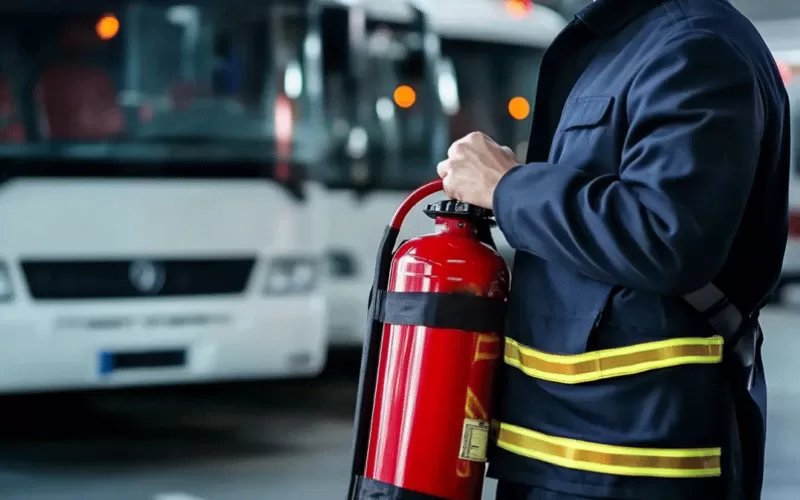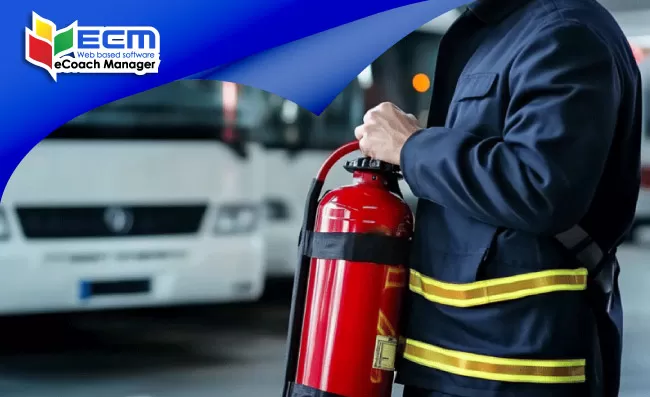All group transport drivers should have skills to be able to handle emergencies well.
Operating a coach charter is much more than driving passengers from one point to another. Drivers need to possess many skills, particularly when managing unexpected situations. Ensuring that a driver is equipped with the right emergency handling skills can significantly improve passenger safety and overall service quality. This blog will discuss the key emergency handling competencies that every coach driver should know and be certified in, allowing them to be prepared for any possible incidents. We’ll also highlight how eCoachManager is the best transport management system to help transport companies run their operations efficiently.
1. First Aid and CPR Certification
One of the most crucial emergency handling skills for a coach driver is first aid and CPR certification. While driving, passengers may suffer from medical emergencies such as fainting, heart attacks, or allergic reactions. The know-how to administer basic first aid, such as using an epinephrine auto-injector or performing CPR, could save lives. Many transport companies now make first aid training a mandatory requirement for drivers.
It’s not just about basic knowledge; drivers should periodically update their first aid certifications to ensure they know the latest procedures. In a medical emergency, a quick, confident response can provide much-needed reassurance to passengers.
2. Fire Safety and Extinguisher Use
Coaches are complex vehicles, and though fire outbreaks are rare, it’s critical that drivers have the emergency handling skills necessary to deal with them. Drivers should be trained in fire safety and understand how to identify the different types of fires that might occur, such as engine fires or electrical fires. They should also be certified in the use of fire extinguishers.
Knowing which type of extinguisher to use and how to handle it correctly is essential for mitigating danger in the crucial moments before emergency services arrive. Additionally, familiarising passengers with evacuation procedures during a fire should be part of every driver’s skill set.
3. Vehicle Breakdown and Roadside Assistance
A coach breaking down can be stressful, especially if the breakdown happens in a remote area or on a busy motorway. Drivers should have emergency handling skills related to vehicle troubleshooting, such as understanding the signs of mechanical failures and performing basic repairs like changing a tyre or addressing a flat battery.
Furthermore, they need to know how to call for roadside assistance, prioritise passenger safety during breakdowns, and communicate clearly with their coach company for backup plans. A well-prepared driver will keep passengers informed, calm, and safe while the problem is being dealt with.
4. Dealing with Passenger Incidents
It’s not just the vehicle that can present challenges; sometimes, emergencies come from passenger issues. From confrontations between passengers to sudden medical incidents, drivers need emergency handling skills, including conflict resolution and crisis management. Drivers should be trained to de-escalate tense situations, manage panic, and, in extreme cases, call for law enforcement assistance.
Equally important is the driver’s ability to identify passengers who may be distressed or behaving erratically and deal with the situation discreetly and safely. Creating a calm environment is essential for maintaining the well-being of all passengers on board.

5. Adverse Weather Conditions
Another key emergency handling skill is managing a vehicle safely through adverse weather conditions. Whether driving through heavy rain, navigating ice-covered roads, or handling sudden wind gusts, a driver’s ability to adjust their driving accordingly can prevent accidents.
Understanding how to adapt to changing road conditions, use hazard lights, adjust speed, and maintain control of the vehicle is critical. Regular training on driving in inclement weather ensures that drivers can easily handle unpredictable elements.
6. Evacuation Procedures
Drivers must know how to safely evacuate passengers from the coach in the case of severe accidents, collisions, or hazardous conditions. This emergency handling skill should be drilled into every coach driver. They should understand how to assess a situation, lead passengers safely away from danger, and communicate effectively with emergency responders.
Knowing where emergency exits are, how to use safety equipment, and how to stay calm under pressure are vital elements of this skill.
7. eCoachManager: Streamlining Safety and Management
While drivers’ mastery of these emergency handling skills is crucial, having the right transportation management software in place ensures that transport companies can effectively monitor and maintain driver safety standards. eCoachManager is a bus and coach management system that provides companies with all the tools they need to manage fleets, organise safety training, and ensure smooth operations.
With eCoachManager, companies can:
- Track driver certification: Record driver qualifications and renewal dates for first aid, fire safety, and other certifications.
- Monitor vehicle conditions: The system allows for real-time updates on vehicle performance, ensuring drivers are operating safe and reliable coaches.
- Streamline communication: In an emergency, eCoachManager offers communication tools that allow drivers to quickly contact the company for assistance, speeding up response times.
In conclusion, passenger safety and the efficiency of a coach charter company depend significantly on a driver’s emergency handling skills. By ensuring that your drivers are fully trained in areas such as first aid, fire safety, and breakdown management, you protect your passengers and boost your company’s reputation for safety.
